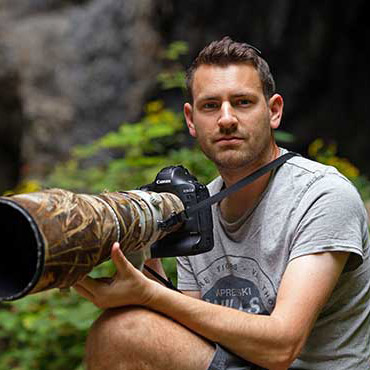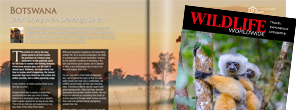South Australia Wildlife Calendar

South Australia is a land of varied landscapes, stunning coastlines and a year-round destination for astonishing birds and wildlife. View our calendar below to find out more about what you can see, the best places to see them, and the optimum time for viewing.
Spring (September – November)
Just like much of the natural world, spring in South Australia is a time of new growth for much of the flora and plenty of new life in the animal kingdom. Many of the native mammals and birds make the most of spring and raise their young before the fierce summer heat. It is a great time to see kangaroos congregating in the valleys of the Flinders Ranges, yellow-footed rock wallabies leap around the rock-faces, and the rocky outcrops also provide the perfect flying conditions for the sensational wedge-tailed eagles.
Gluepot Reserve is a haven for rare birdlife including Major Mitchell’s cockatoo, striated grasswren and the black-eared miner. A rare treat for a lucky few comes in the way of stumbling across the remarkable incubation mounds of the malleefowl.
 .
.
On Kangaroo Island you can witness thousands of birds as they migrate past the island to feed in the rich waters of the Southern Ocean, Australian sealions use the beaches to bask on the warm sand and delicate orchids can be spotted pushing their way through the dense leaf litter.
Coorong National Park sees up to 100,000 birds, made up of a variety of species, gather at the lagoons to feed – it is truly a birders' paradise!
Summer (December - February)
The warmest months of the year mean much of the terrestrial wildlife congregates closer to permanent water sources and the water-reliant birdlife gathers along the coast or on major waterways such as the Murray River or Coorong National Park. Striking summer migrants include the white-winged triller, woodswallows and rainbow bee-eater.
The warmer months are perfect for many of the region’s reptiles including Rosenberg’s goannas on Kangaroo Island which are in the midst of their egg-laying season. Australian sealions and New Zealand fur seals are at the height of their breeding se – territorial squabbles are a common sight and often quite spectacular.

If you want to make the most of the crystal clear waters of the Eyre Peninsula, summer is the best time to get eye to eye with Australian sealions in Baird Bay. As you slip into the water, the wild sealions approach you in their own time and can leave at any time – they are only here because they want to be!
Autumn (March – May)
Just like in parts of the northern hemisphere, autumn is a time of change in South Australia. The colder weather kick starts the nesting of both glossy black cockatoos and little (fairy) penguins on Kangaroo Island while Cape Barren geese return to the island to claim their nesting territories for the upcoming breeding season.

Similarly, across South Australia the iconic black swans start their elaborate mating behaviour of wing-raising, neck-stretching and loud trumpeting.
With the temperatures starting to fall, autumn is the time to start thinking about visiting the outback. The Flinders Ranges, Gawler Ranges and Gluepot Reserve will all be more enjoyable in these cooler months and the wildlife will be easier to see during daylight hours.
Winter (June – August)
The cool months of winter can provide a great escape from the crowds along the coast and a good time to visit the outback, particularly for unusual birds such as grey grasswren, both orange and yellow chat, flock bronzewing, grey falcon and cinnamon quail-thrush.
The high cliffs of the Head of Bight are the perfect place to witness Southern right whales as they use the shallow waters to mate and give birth to their calves. With crystal clear waters, enjoy aerial views as the whales swim and play within close proximity to the cliffs – at the height of the season (July/August), over 100 whales can be in the area .
The rare Southern right whales can also be found in the sheltered waters off Kangaroo Island, and while on land you can see the bizarre short-beaked echidna mating trains – where up to eight males will follow a single female for their chance to mate. Flinder’s Chase National Park is the best place to see koalas on the island, as their young appear from the mothers’ pouches for the first time.

Contact our wildlife experts today to plan your perfect South Australia adventure!








